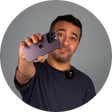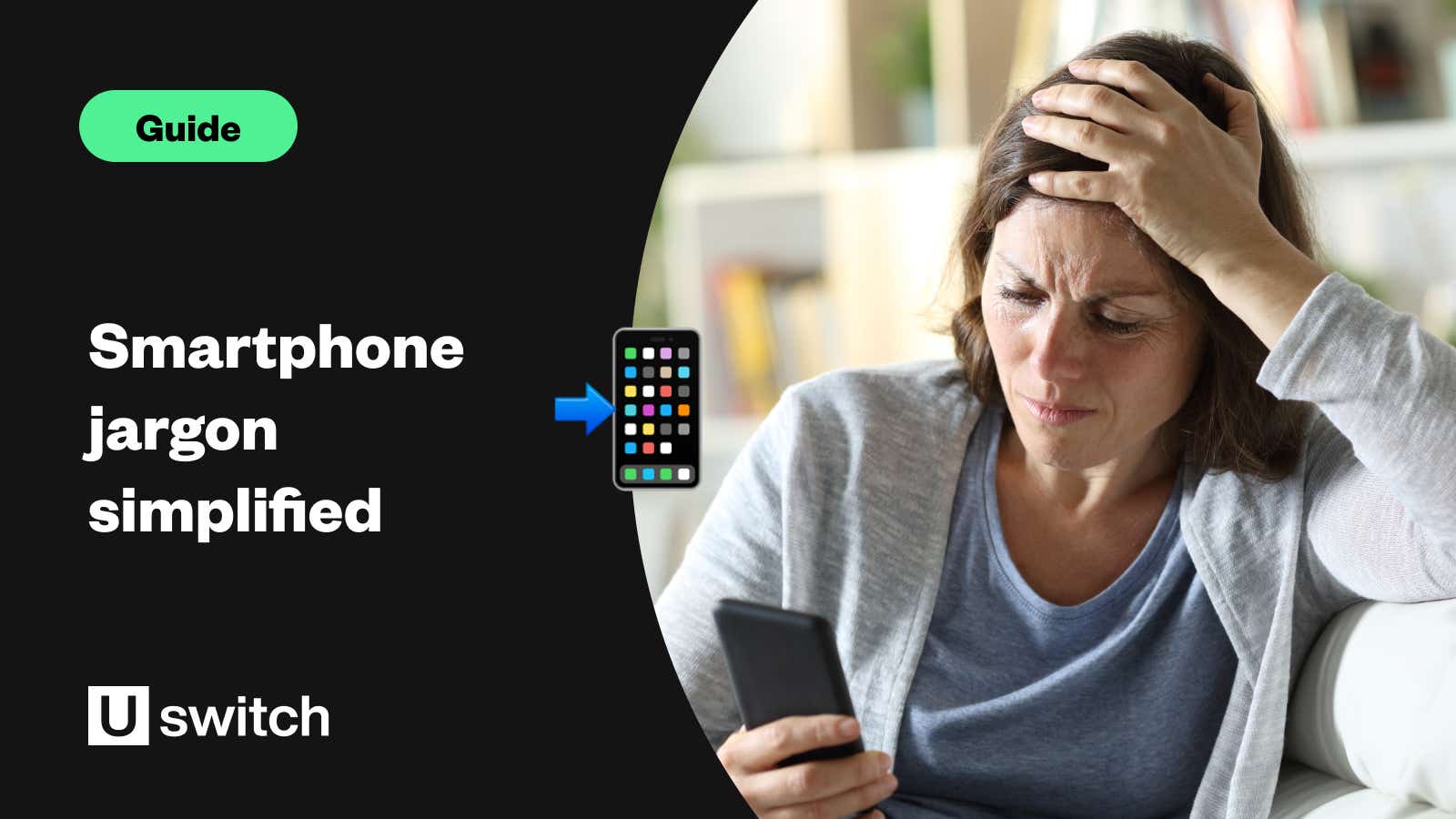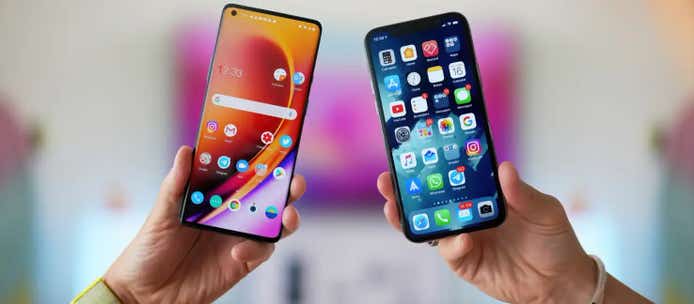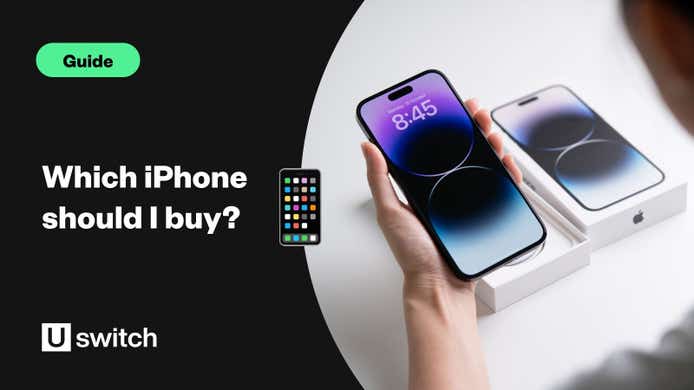With fresh innovations seemingly arriving every week, it can be hard to keep up with smartphone technology and the new words that are coined to label them.
To make things a bit easier, we've compiled a list of common and not-so-common jargon along with simple explanations in layman's terms. So if you're muddled about megapixels or baffled by Bluetooth, we'll get you up to speed.
1G First-generation mobiles or mobile systems – these were the first-ever mobiles and provide the basis for all of today's smartphones.
2G Second-generation mobiles or mobile systems – 2G mobiles supported data, fax and SMS mobile services. 2G handsets also offer limited data communications.
2.5G 2.5G or "second-and-a-half generation" – this was the next step from 2G and provided enhanced data communications services, including Multimedia Messaging Service (MMS) as well as Wireless Application Protocol (WAP) access for emails and web browsing.
3G Introduced in the UK in 1998, 3G is a network technology that allowed users could access the internet at higher speeds than before and download music and video smoothly and quickly.
4G This is the current standard in mobile phone technology and is capable of super-fast mobile internet speeds of up to 300Mbps.
5G 5G offers speeds hundreds of times faster than 4G. And it's now being rolled out in the UK. The most recent flagship phones from Apple, Samsung and Sony are all 5G-compatible, and the majority of SIM-only deals come with 5G.
A-GPS A-GPS is technology used by mapping software that speeds up the process of determining your location, so you can get directions faster.
Air time Air time refers to the monthly allowance of talk minutes you're entitled to with your mobile phone contract.
AMOLED This refers to Active Matrix Organic Light Emitting Diode (AMOLED) display technology. AMOLED screens are sharper than standard LCD screens and are battery-efficient.
Android This is software developed by Google that powers smartphones manufactured by the likes of Samsung, HTC and Sony. Rather than 'software' Android is more usually referred to as an 'operating system', which is a term you'll find explained below.
Audio jack This is the aperture in your smartphone where you plug in your headphones or a portable speaker.
Auto-focus Auto-focus is a feature of cameraphones that intelligently and automatically focuses on the subject of your photo without any input required from the photographer.
Bezels Bezel refers to the outside frame around the phone screen. Some smartphones, such as the Samsung Galaxy Edge range have smaller bezels to make room for an edge-to-edge display.
Bluetooth Bluetooth is a technology that creates a 'local' wireless connection. It allows smartphone owners to exchange data over short distances.
Caller display The screen of your mobile that shows the name and number, and sometimes a picture of the caller on a call.
Camera phone This is a mobile phone with a built-in camera so you can take pictures and record videos.
Cloud storage Cloud storage is a way of storing your music, photos and other files in a secure location online. It means you're not limited by your phone's built-in storage and can access your files from other devices if you need to.
Coverage This is the area in which you get a mobile phone signal from your network. If you have coverage then you can make and receive calls on your mobile phone, send and receive messages and access the Internet.
Desktop charger An accessory - also referred to as a charging dock or cradle - that holds the handset upright on a surface on your desk while it is charging so you can easily view the caller display.
Dual band This term refers to mobiles that can switch between two frequencies. All new UK mobiles are dual-band.
Dual lens A dual-lens camera uses two lenses rather than one to take more detailed photos.
Dual-SIM A dual-SIM phone has two SIM slots and enables you to have two active SIMs at the same time. This means you will have two phone numbers and can receive calls and texts on both lines.
Fast charging Fast charging, sometimes known as quick charge, allows you to charge your battery by using higher-than-normal voltage. For this to work, both your phone and your wall charger need to support fast charging.
Fingerprint scanner A fingerprint scanner adds another layer of security by only allowing you to unlock your smartphone with your unique fingerprint.
GPRS General Packet Radio Service – This was a way to enhance 2G phones' capabilities so they can send and receive data at a much faster rate. A GPRS connection means the phone is "always on" and can transfer data immediately.
Hands-Free This is a safety feature that allows you to talk without holding the handset to your head and often involves using an extra hands-free accessory such as a Bluetooth earpiece. This is particularly popular with drivers because holding a handset while driving is illegal in the UK.
Instant messaging This term refers to services that let you chat with your friends with text messages in real-time. Examples of instant messaging apps or services are WhatsApp and BlackBerry Messenger.
Iris scanner An iris scanner adds another layer of security by scanning your eye to unlock your phone. It is thought to be more secure than fingerprint scanners.
LCD screen Liquid Crystal Display (LCD) is made up of an array of liquid crystals that get illuminated by a backlight. They are widely used on smartphones because they perform well, even in direct sunlight, and they don't use up too much battery power.
Mbps Mbps stands for megabytes per second and is a measure of the speed of your internet connection.
Megapixels Megapixels are a way of measuring the quality of a camera. In general, the more megapixels the better the camera. But it's not the only thing that determines how good the camera is. The amount of light a lens lets in is also important, for instance. So megapixels aren't the be-all and end-all.
MP3 Player This can be hardware or software built into a mobile phone that allows you to listen to music and podcasts.
Multimedia messaging This term refers to sending messages between mobile phones that include images and video clips.
microSD card A microSD card is a tiny storage accessory that you insert in your phone to massively boost capacity.
Modular phone A modular smartphone can be upgraded by attaching or replacing components, such as a new battery or a better camera. This means that customers only pay for the features they use and can upgrade components as their needs and technologies change. If their phone breaks, they can replace the broken component without having to replace the entire handset.
Off-Peak This refers to the period of time after business hours have ended and during which mobile networks tend to offer reduced rates for calls.
OLED An Organic Light Emitting Diode (OLED) refers to display technology. Similar to AMOLED, OLED screens are sharper than standard LCD screens and are designed to be energy-efficient.
Operating system An operating system is the software that powers smartphones, as well as other devices such as tablets and PCs. As well as managing your phone's resources so you can do lots of things at once, an operating system is the platform on which your phone runs apps.
Examples of operating systems are iOS (iPhone), Android and Windows.
Optical image stabilisation technology Optical image stabilisation technology keeps your smartphone camera steady, so it's to take good photos in low-light conditions.
Pay As You Go (PAYG) Pay as you go means you're not tied to a contract and only pay for minutes and data when you top up.
Peak The time of day when the phone network is busiest. This usually occurs during normal business hours.
Refurbished phone A refurbished phone is a handset that has been returned to the seller because of some manufacturing and functioning defect. The phone is then repaired, undergoing full quality checks with the best industrial standards and sold again.
Roaming This is sometimes referred to as International Roaming and means using your phone in another country and on another nework.
Your network and talk plan will determine how many countries you can roam in and what charges you may incur from using this service.
Secondary camera This is the front-facing camera that's most often used for 'selfies'.
SIM cards This stands for Subscriber Identity Module. It is the chip that identifies the mobile number and mobile account to the network. It stores essential data and is required to make or receive calls on your network.
There are three types of SIM cards: standard SIMs, microSIMs and nano SIMs. The sole difference between them is size.
SIM only A SIM-only deal or SIM only contract is that solely includes a SIM card and an amount of monthly usage. Unlike conventional contracts, SIM-only deals don't include a phone.
They're especially popular with cost-conscious consumers and customers who have come to the end of their standard contract and feel they don't want or need to upgrade to a newer phone.
SIM-free SIM-free means you buy the phone of your choice without a SIM card in the package, so you will be free from any contract or commitment to a specific network. SIM-free phones come completely unlocked, letting you decide what SIM card to use in them.
Smartphone 'Smartphones' refers to high-end handsets that carry out a whole range of functions. More than just phones, smartphones can surf the web, send and receive emails, record video, take pictures and be used for video games and viewing movies and much, much more.
SMS This is an acronym for Short Message Service. It's the technology that allows traditional text messages to be sent and received on all mobile phone networks.
Splash-resistant WA splash-resistant phone should repel splashes and light water on the device but isn't water resistant. Simply put, it should be ok if you take it out in the rain but probably wouldn't survive being dropped in a puddle.
Standby time This refers to the number of hours that a mobile phone battery will last without receiving or making any calls. If you use the phone to make calls or send messages then the standby time will be diminished.
Streaming video and music Streaming is a way to enjoy music and video on your phone without having to download the content first. Instead, you watch or listen in 'real time'. Music services Spotify and Deezer use streaming, as so video-on-demand services such as NowTV.
Stylus A stylus is a type of 'pen' that's used for writing or drawing on your smartphone's or tablet's screen. Examples are Samsung's S-Pen and the Apple Pencil for the iPad Pro.
Talk time This is the same as air time and refers to the actual amount of time spent talking on the phone, or in some cases the allowance of time available on your talk plan.
Tri-Band Tri-band or Triple band phones can operate across three GSM bands, which means they can be used in more than 100 countries.
Virtual reality headset Virtual Reality or VR headsets create a convincing replacement of an environment using virtual reality content, such as a movie, a game or prerecorded content from a 360-degree camera. Once wearing the headset, the user will be able to look around and sometimes interact with the virtual reality on the screen.
Voice commands This is a way of using your mobile with your voice. You speak a command and, assuming it understands, your smartphone will carry out the instruction. Voice commands are especially handy when you're driving or in situations where your hands are in use elsewhere.
USB cable USB cables are used to connect smartphones to PCs and laptops and for charging your phone from the mains with a plug attachment or directly from your computer.
You'll use a USB when you're transferring music, video and photos.
USB-C cable USB-C is a newer type of USB cable that enables users to transfer data faster and charge their smartphones more efficiently.
Voicemail Voicemail is a service provided by your network. Voicemail records audio messages from callers when you are unable to answer the phone.
WAP This stands for Wireless Application Protocol and was the means through which older-generation phones could access the internet.
Water-resistant Water-resistant phones can withstand a lot of water without becoming damaged. Their precise imperviousness to liquid varies from phone to phone, but most should survive being submerged in three feet of water for up to half an hour. Water-resistant phones aren't fully waterproof though, so you probably shouldn't take them swimming.




